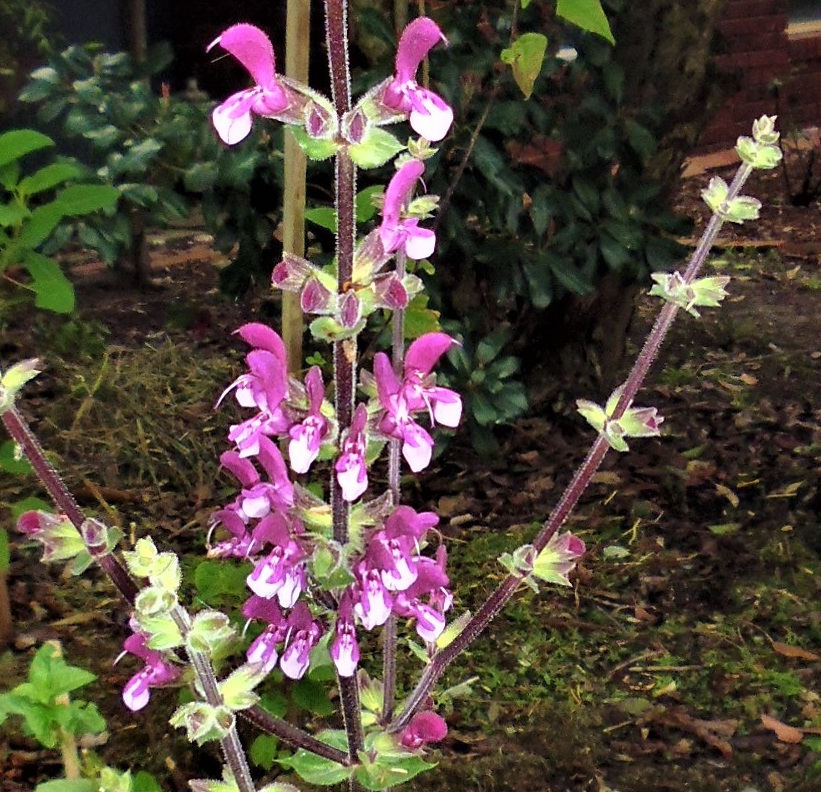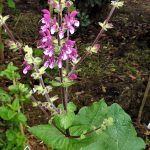Salvia heirosolymitana: a herbaceous perennial with basal growth and a beautiful spike of maroon flowers 80cmH in late winter, through spring to summer.

Salvia heirosolymitana: is a herbaceous, coming up and beginning to flower in late winter. Producing flowers before the majority of the spring flowering begins, providing food for bees and other pollinating insects as they emerge from winter.
Flowers: are a falcate type having a large straight crimson hood, with a long white stigma protruding from the middle of the two lobes.
The 2 side lobes are also crimson, but the middle lobe is a pale pink to white colour. Right at the throat area are crimson markings, these and the pale lobe act as a beeline for the pollinating insects. The bottom lobe is also cupped to allow drops of dew to collect for bees to sip as well as acting as a landing place before entering the flower.
Flowers are held in whorls of 6-8 flowers along a dark coloured, hairy stem. Flowering stems are formed in panicles with smaller side shoots, most of these happening fairly low down along the stem.
Calyces: are green, hairy and well ribbed. Each lobe being pointed. After the flowers have finished, the calyces remain on the stem, turning a straw colour as the season progresses. Seeds are small and round. These will drop when the stem is cut down at the end of the flowering season.
Leaves: are large, long and dark green with undulating shallow lobes along the edges. Small rounded crenations are found around the margins.
Leaves form a rosette or basal type of growth, forming a clump before the flowering stem appears. Depending on the temperature of the winter months, the leaves can begin to appear in late autumn in mild areas, increasing the length and their largeness before flowering begins.
If the winter temps. are cold, then the leaves won’t appear until the temps begin to warm again.
Salvia heirosolymitana: is a wonderful addition to a late winter early spring garden.Even if you are in a cold winter area with snow the plant will appear in early spring before the majority of other spring bulbs and plants begin flowering.
These early spring flowering plants help to provide food for the insect just emerging from hibernation.
S. heirosolymitana is similar to S.eigii and can be confused, but this Salvia is dark crimson and S. eigii is pale pink. Both appear at about the same time.
This Salvia certainly brightens up a dark winter garden heralding in the Spring. Plant with other early spring bulbs and perennials that grow during the winter.
When the flowering finishes in late spring, early summer, collect any seed and cut down the flowering stem. clean up any old leaves, feed and mulch well to keep the root area cool over the summer period. The basal growth of the leaves may remain , but new leaves will appear in autumn in mild areas.
Propagation: usually from seed sown fresh in early summer, but new young shoots can also be taken off during the growing season. Any flowering shoots should be removed to allow the plant to develop properly and will flower the next season.
Sometimes available


